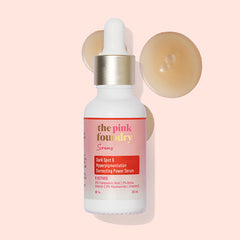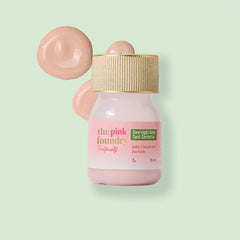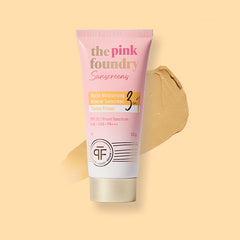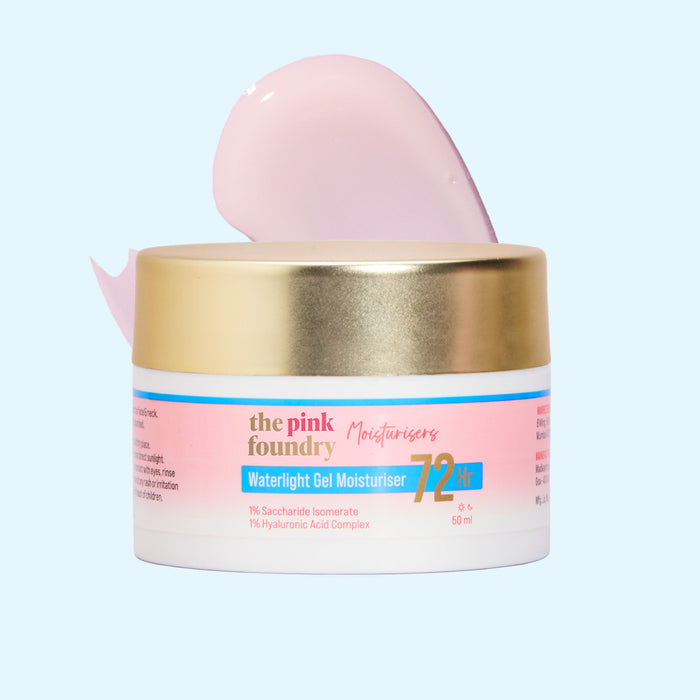Can you use retinol with hyaluronic acid?
Retinol and hyaluronic acid are incredible agents for rejuvenating your skin. They both have anti-ageing and nourishing properties. Both have different properties that serve different purposes and are common ingredients in a skincare routine. However, they can do wonders when used together but must be layered properly. This article will give you a comprehensive idea of the possibilities of blending Retinol and hyaluronic acid together and how it needs to be done to derive the best results possible.
What is hyaluronic acid?
This substance is naturally produced in the human body in areas like joints and skin. It helps retain moisture in the body and thus provides nourishment to the skin and joints. However, with sun rays and other environmental pollution, the percentage begins to deteriorate in the body. As a result, we need to provide the body with external constituents. For instance, we can replenish the deficit by using products like Waterlight Gel Moisturiser 72 Hour Hydration. These components work miracles in handling ageing, acne, dry skin, joint pain, bone strength, etc.
What is retinol?
Retinol is a part of the Vitamin A family that helps in cell production. It is a fat-soluble vitamin that peels off the surface layer of the skin, which helps in the production of collagen. Retinol also helps unclog pores, which arrests the formation of wrinkles, fine lines, etc., which helps deal with premature ageing. It is also proven to provide incredible assistance in curing acne. If you are using Retinol for the first time, it will take some time for the improvements to be visible.
Can hyaluronic acid and Retinol be used together?
Combining Retinol and hyaluronic acid is feasible and highly recommended for achieving hydrated and moisturised skin. It has been seen in some cases that using Retinol without any layering causes dryness and irritation to the skin. However, the hyaluronic acid's moisturising property will help balance the lack of hydration. The acid will also increase the skin's power to endure irritation and rashes.
Benefits of using Retinol with hyaluronic acid
The dream team for most skincare routines is Retinol blended with hyaluronic acid. As they complement each other, the side effects of Retinol are balanced by hyaluronic acid. Moreover, when you blend in both components, you target dry and ageing skin. Let us first look at the health benefits both of them provide us.
-
Hyaluronic Acid Advantages
Some of the main advantages of this natural skin ingredient are,
- Ensures skin moisturisation and hydration
- Helps to achieve a more youthful skin
- Instigates the skin cell regeneration
- Aids in anti-ageing
- Decreases skin pigmentation
-
Retinol Advantages
The major skin benefits offered by this form of Vitamin A are;
- Enhances collagen production
- Inhibits the formation of fine lines and wrinkles
- Elevates the skin tone and texture
- Arrests hyperpigmentation and thus dark stops
- Minimises the skin pores
If these components are mixed to form a solution, the action of that product doubles. You are gaining a youthful face and preventing your skin from premature ageing. Also, Retinol has various side effects, like dry and flaky skin, a tendency of acne breakouts, skin irritation, and reddening. Hyaluronic acid provides the required hydration and nourishment for the skin to bear the side effects of Retinol.
How to use Retinol and hyaluronic acid together?
There is a certain process for layering Retinol and hyaluronic acid together. The process is performed in three consecutive steps. They are as follows,
-
Cleansing
First, you need to clean your face with a water-based cleanser. This will help in getting rid of any impurities present in the skin. Massage the product in circular motions and then rinse it. Don't rub off the moisture. Rather, pat dry it to avoid friction. Using a moisturising cleanser without harsh chemicals is highly recommended. If you perform this process after an event and have heavy makeup, cleanse your face with a cleansing bar before applying the water-based cleanser.
-
Retinol application
After your skin is dried, take a pea amount of the Retinol product and spread it evenly over the face, avoiding the eyes and mouth. Retinol may be available in multiple forms, such as gel, cream, or serum. There are a few limitations with Retinol. First, try applying the product at night since Retinol increases the skin's sensitivity; hence, sunrays can cause irritation or rashes. However, in case of any compulsion, layer it up with sunscreen. Moreover, if you already have sensitive skin, wait about thirty minutes after cleansing before going to the next step.
Also read: Retinol for Beginners: A Comprehensive Guide
-
Hyaluronic acid layering
Once again, waiting until the skin completely absorbs the Retinol would be best. After it dries up, apply a nickel-sized amount of Hyaluronic acid cream or moisturiser. Before applying, ensure the hyaluronic acid is non-comedogenic, which means it will not clog the pores on application. Wait for it to get absorbed into the skin.
Conclusion
Yes, hyaluronic acid can be appreciably paired with Retinol, but the layering must be done carefully. While using Retinol with hyaluronic acid, the thinner product should first be applied, followed by the thicker product. Though normally this is the succession, if the consistency of your hyaluronic acid moisturiser is lighter than that of the Retinol cream, you might reverse the process. While choosing your products, make sure you consider the brand.
FAQs:
-
How often can we use Retinol and hyaluronic acid together?
For notable results, three to four times a week is enough
-
Should I take Retinol after or before hyaluronic acid?
Usually, hyaluronic acid should be applied after Retinol. You can opt for vice versa depending on your skin's reaction and both products' consistency.
-
Can I mix anything with Retinol?
Avoid layering exfoliating acids like glycolic (present in AHAs) and salicylic (present in BHAs), making your skin more dry and flaky.
-
Can I use Retinol and hyaluronic acid when I am pregnant?
Please refrain from using Retinol during your pregnancy because it might have teratogenic effects. However, you can use Hyaluronic acid for hydration
-
What is the best component to combine with Retinol?
Combining Ceramides and Sunscreens with SPF 50 is advisable for enhanced results.















